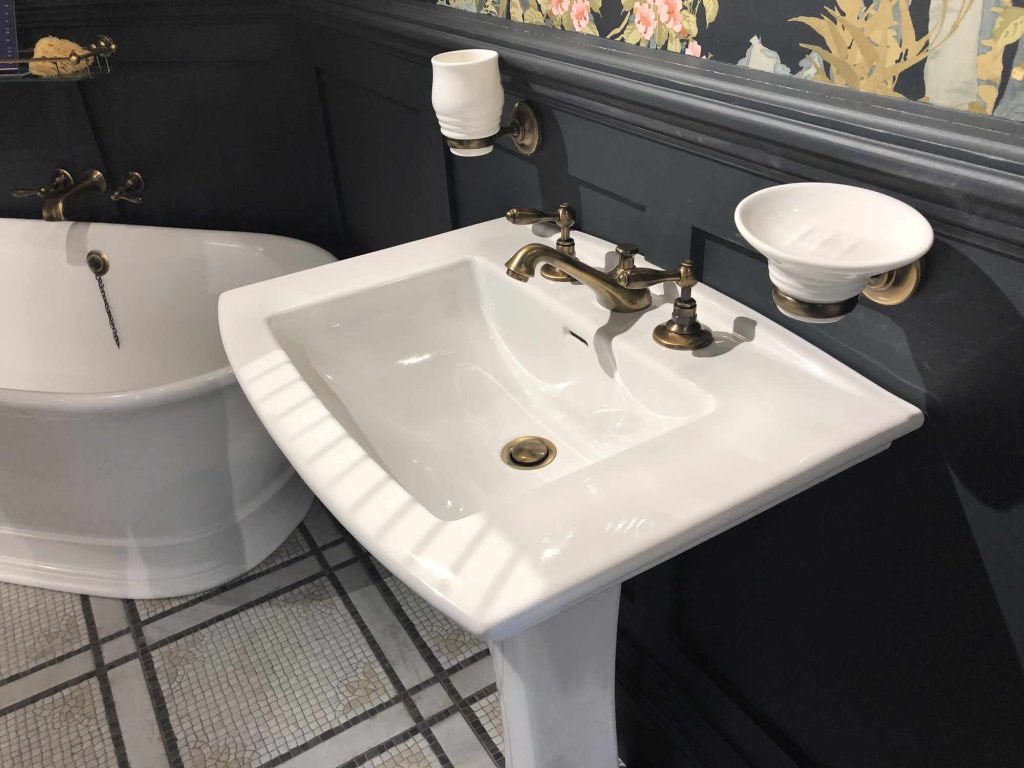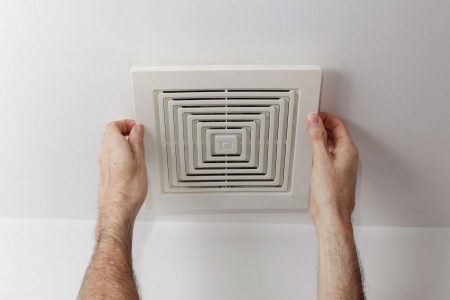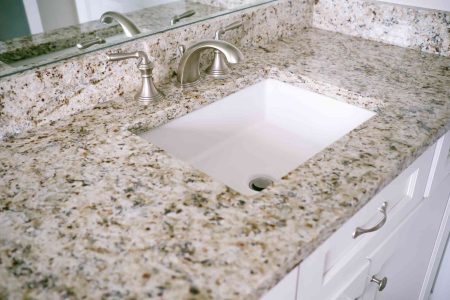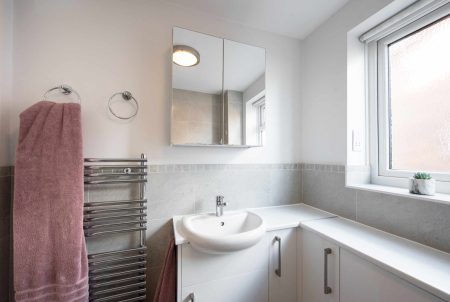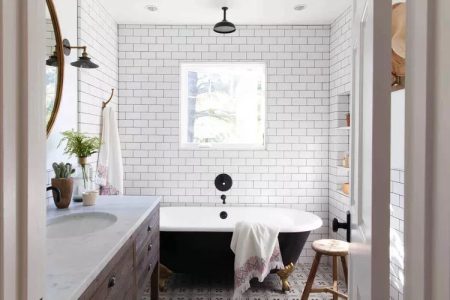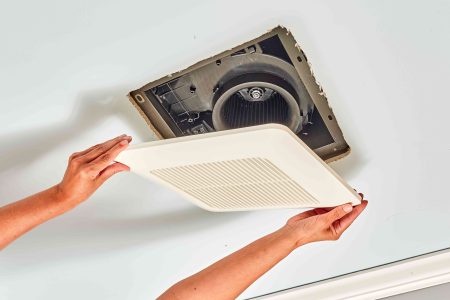With home design, the most reliable motto is always: What comes around, goes around. That pretty much describes the lifecycle of pedestal sinks.
After occupying a favored and familiar place in bathrooms for decades in the early 20th century, pedestal sinks were largely replaced by boxy bathroom vanity cabinet-counter combinations. While big vanities have their plusses, pedestal sinks—with their grace and surprising practicality—have emerged in bathrooms once again as stylish space-savers.
What Pedestal Sinks Are
Pedestal sinks consist of an upper basin and a lower shaft (pedestal). Pedestal sinks are largely made of porcelain.
Pedestal sinks are composed of two physically separate elements that are attached during installation. The top is the lavatory and this is the section that collects water in the basin and which acts as the attachment point for the faucet or fixture. The lower section is the vertical pedestal, and this partially carries the weight of the lavatory.
A pedestal sink is the purest sink possible. It does not come with either the clutter or the advantages of expansive countertop space or lower storage. A pedestal sink is only about the sink: water and basin. It emphasizes the core function of the bathroom sink and rarely strives for anything more. The pedestal sink is successful in its simplicity.
-
Saves valuable bathroom floor space
-
Lower priced than comparable sink vanities
-
Ideal for small bathrooms like powder rooms
-
Easy to transport from the home center, as opposed to big vanity cabinets
-
No storage space below
-
Little or no countertop space
-
Supply and drainage pipes sometimes visible
-
Changing from a vanity to a pedestal sink can require new flooring
Best Bathrooms for Pedestal Sinks
Pedestal sinks are better suited to some types of bathrooms over others. For starters, pedestal sinks work perfectly in any bathroom where space is limited, including half baths and powder rooms.
Bathrooms that aim for an early 20th century period style also can be a great fit for a pedestal sink. Many new pedestal sinks are modeled after traditional styles, offering an authentically vintage look in a new unit.
Regardless of the style, pedestal sinks give your bathroom an airy, open look, in contrast to the bulk of a vanity cabinet. In fact, for a truly authentic period style, it would be unthinkable to install anything but a pedestal sink; a bathroom vanity cabinet would be bulky, boxy, and anachronistic.
Pedestal Sink Installation Basics
Some homeowners may be surprised to learn that pedestal sink lavatories are supported both by the wall behind the sink as well as by the pedestal. The wall behind the intended sink location must be strong enough to support much of the weight of the lavatory.
Also, the supply and drain pipes must enter the sink from the wall rather than from the floor.
Two hanger bolts are typically installed on the wall behind the lavatory, thus bracing the lavatory against lateral movement and partially carrying its weight. If this is the case, it’s a good idea to open the wall up where the sink will be bolted to and install blocking to ensure a solid connection. A wood screw is driven vertically through the bottom of the pedestal into the subfloor.
Pedestal Sinks vs. Bathroom Vanity Cabinets
The clean, airy look of pedestal sinks come with a significant drawback: no counter space. Many pedestal sink lavatories have almost no flat space for setting down a razor or makeup.
This alone can make pedestal sinks a poor choice for heavy bathroom users. Some models do offer limited counter space via an apron around the basin bowl, with square sinks usually featuring the largest aprons.
By contrast, bathroom sink vanities offer countertop space ranging from 24 inches to 60 inches and even more.
As for storage space, pedestal sinks have none. Anything that would be stashed in a sink vanity cabinet must be stored in a separate cabinet, shelves, or in a medicine cabinet above the sink. Bathroom vanity cabinets have closed storage space, though it must be noted that it is typically difficult to use and is limited to storing cleaning fluids, hairdryers, plungers, and other infrequently used items.
If you are considering switching from a bathroom vanity to a pedestal sink, keep in mind that you may need to replace the flooring, baseboards, and wallboard behind and underneath the vanity space when the old vanity will be removed. Often, homeowners or installers do not install flooring on the area under the vanity cabinet or paint behind it.
Is a Pedestal Sink Right for You?
A pedestal sink might be perfect for your bathroom if any or all of the conditions apply:
- You like a more traditional look.
- The bathroom is small and you’re looking for ways to carve out more space.
- You’re either redoing the bathroom floor or there is already continuous flooring across the intended installation area.
- Storage isn’t a problem for you. You either have storage elsewhere in the bathroom or outside.
- The back wall behind the pedestal sink has secure studs for the sink anchors.
Read the full article here



